
The Right Honourable Mary Simon aims to be an Arctic fox
Canada’s first-ever Indigenous governor general doesn’t play favourites among our majestic natural wonders, but she...
Editor’s note: Travel to the village of Tahsis for this article was concluded before physical distancing and recommended travel restrictions due to the COVID-19 pandemic were put into effect.
Residents of Tahsis treated Martin Davis with suspicion the moment he moved there two decades ago.
The remote village on the northwest coast of Vancouver Island had survived off logging and milling over the decades, until the last mill closed in 2001, around the time Davis arrived.
Davis, an environmentalist, caver, tree planter and former underground radio-station operator, spent his spare time exploring the area’s caves and went on to play an important role in local conservation initiatives, including the creation of the 316-hectare Weymer Creek Provincial Park.
Also in the Weymer watershed, on the east side of Tahsis Inlet just beyond the village, he played a key role in the establishment of the 29-hectare Wildlife Habitat Area in 2000.
For Davis, these decisions represented important wins for Tahsis’ rich biodiversity and landscapes, including six bat species, Roosevelt elk, old-growth trees, and caves and karst features containing the bones of mammals dating back 1,300 years.
But for long-time Tahsis residents, the new protected areas were simply part of the town’s growing economic problem. “People thought I was trying to shut down all logging in the area,” Davis recalls. “They were looking for scapegoats.”
“I was afraid I was going to get lynched.”
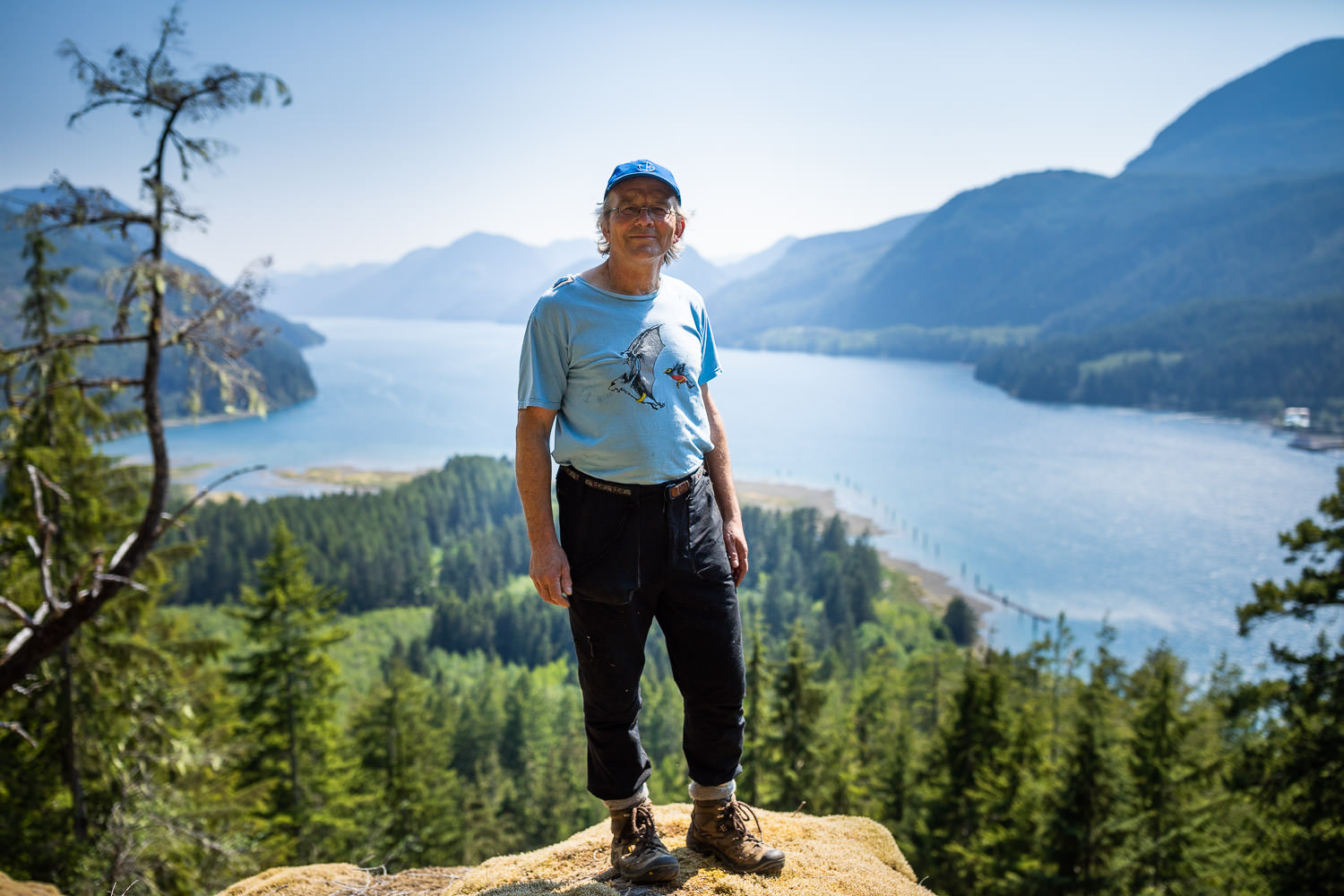
Mayor Martin Davis stands above the Tahsis Inlet. Photo: TJ Watt
The trip to Tahsis requires a 150-kilometre journey across the girth of Vancouver Island. From Campbell River, the nearest commercial hub, you head due west. Once you hit Gold River the pavement stops and it’s another 65 kilometres on a gravel logging road.
Tahsis is at the end of the line, and it can also feel like a town at the end of the world.
I arrive for the first time in darkness in torrential winter rains, navigating dimly lit streets through a heavily fogged windshield. The main drag is South Maquinna Drive, but it does not directly connect with North Maquinna Drive, where my Airbnb is located — and the village has no cell service (although that changed a few days after my departure).
I pull into Sally’s Grill at the far end of town, greeted by a “please dont (sic) touch the dog” sign on the front door. Tonight’s home-cooked special is “redneck lasagna” which, I’m told, is a reference to the huge portions and certainly not the ownership or clientele.
Co-owner Sally Taylor is preparing to close early due to lack of business. “Go back, cross the bridge, turn left at the store, and follow the Tahsis River,” she says.
In the morning, I have a whole new outlook. The rains have called a temporary truce; sun pours across the mountain tops and puts a much-needed shine on the tarnished little town that forms part of my family history.
My late father, Art, and older brother Brian were employed here in the 1960s, as a millwright and labourer, respectively. Brian recalls the “town’s smell of lumber, the big heavy timbers in the hold of the ocean freighters, getting a sore back and having to quit, and, of course, sitting at dad’s table in the bunkhouse room in the evenings playing crib.”
Some 2,500 people lived and worked in Tahsis in its heyday, drawn by the booming timber industry.
“You used to get $18 an hour to start just to push a broom, back in the ’90s,” Davis tells The Narwhal. “There were Italian and Sikh communities. People came from all over. Pretty amazing, actually.”
Today the town’s population has dwindled to one-tenth its historic numbers, and only a handful of people are still employed in the forest industry.
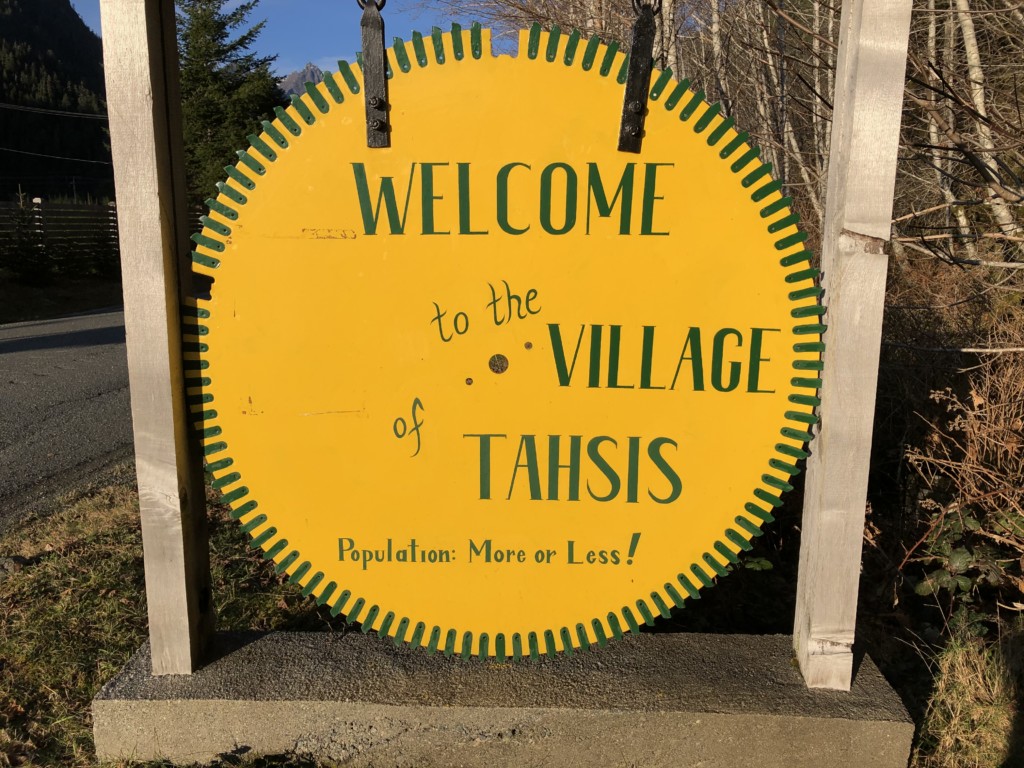
A welcome sign for the Village of Tahsis. The village once supported a population of 2,500 with many working in the forestry industry, supported by a local mill. The population has now dwindled to around 250 people. Photo: Larry Pynn
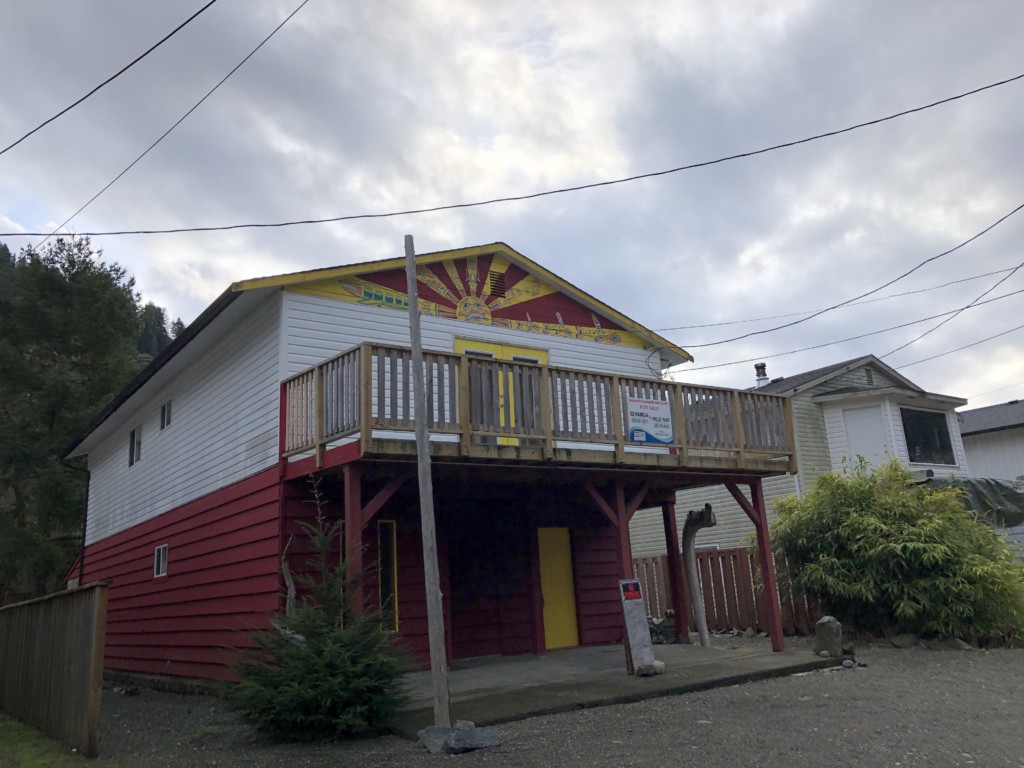
A building in Tahsis. Ideas for economic revitalization for the village include ecotourism, fishing, small-scale logging and support for local and visiting artists. Photo: Larry Pynn
The industry’s changing fortunes have led to a recent shift in attitudes within the town. Long after Davis’ early days of environmentalism, his ideas for a new economy — which include extending seasonal sports fishing to wider ecotourism and moving to small-scale selective logging — are catching on. Those ideas carried him successfully through a 2018 mayoral campaign.
“It’s amazing — the transition of this town,” he acknowledges. “It’s quite ironic that I’m the mayor now.”
At 112 votes, you’d be hard pressed to call Davis’ win a landslide, but he captured half the vote and left his two competitors in the dust.
Mill closures, layoffs, reduced operations and labour strife hit rural communities especially hard in 2019. Four mills, including Canfor’s in Vavenby, Tolko Quest Wood’s in Quesnel, West Fraser’s in Chasm and the Errington Cedar Products mill in Errington, are now permanently closed.
And a strike at Western Forest Products, one of the major employers on Vancouver Island, came to an end in February in its eighth month.
In January, B.C.’s Ministry of Forests, Lands, Natural Resource Operations and Rural Development estimated 4,686 workers were affected by B.C.’s forestry crisis, including 725 workers impacted by the United Steelworkers’ strike against Western.
Almost two decades after its last mill shut down, Tahsis offers a glimpse of the challenges small resource-dependent communities face as they try to reinvent their economic futures.
Today, the community’s mill-town legacy, an industrial wasteland distinguished by rotting wood and rusting steel, is best viewed near the mouth of the Tahsis River. Locals ignore the ‘No Trespassing’ signs and crawl around the chain-link fencing to walk their dogs.
In an area known as the “flats” are single-family dwellings and a trailer park with mobile homes, some protected from the rain beneath tarps. I found one single-wide mobile home selling on-line for just $5,000 plus a $275-per-month pad rental.
Over breakfast, back at Sally’s diner, Davis lays out the opportunities and challenges involved in getting Tahsis back on its feet.
“This town should never have existed here,” Davis says of the flats. “This was an estuary that was filled in with hog fuel, cedar chips, whatever, and then they threw a bit of gravel on top and built houses. There’ve been a lot of settling issues and problems. We’d like to phase out this part of the community, but that’s a tough thing to do.”
A consultant’s 2019 report on flood risk found the flats lies within the floodplain of the Tahsis River. The report noted that due to climate change, the area also faces the prospect of rising sea levels and 12-per-cent wetter winters.
More than $41 million is needed for flood-proofing projects, including raising dikes, according to the report. The village’s current annual operating budget is about $2.5 million.
“The town as it is isn’t sustainable,” Davis says. “We’re kind of an economic basket case.”
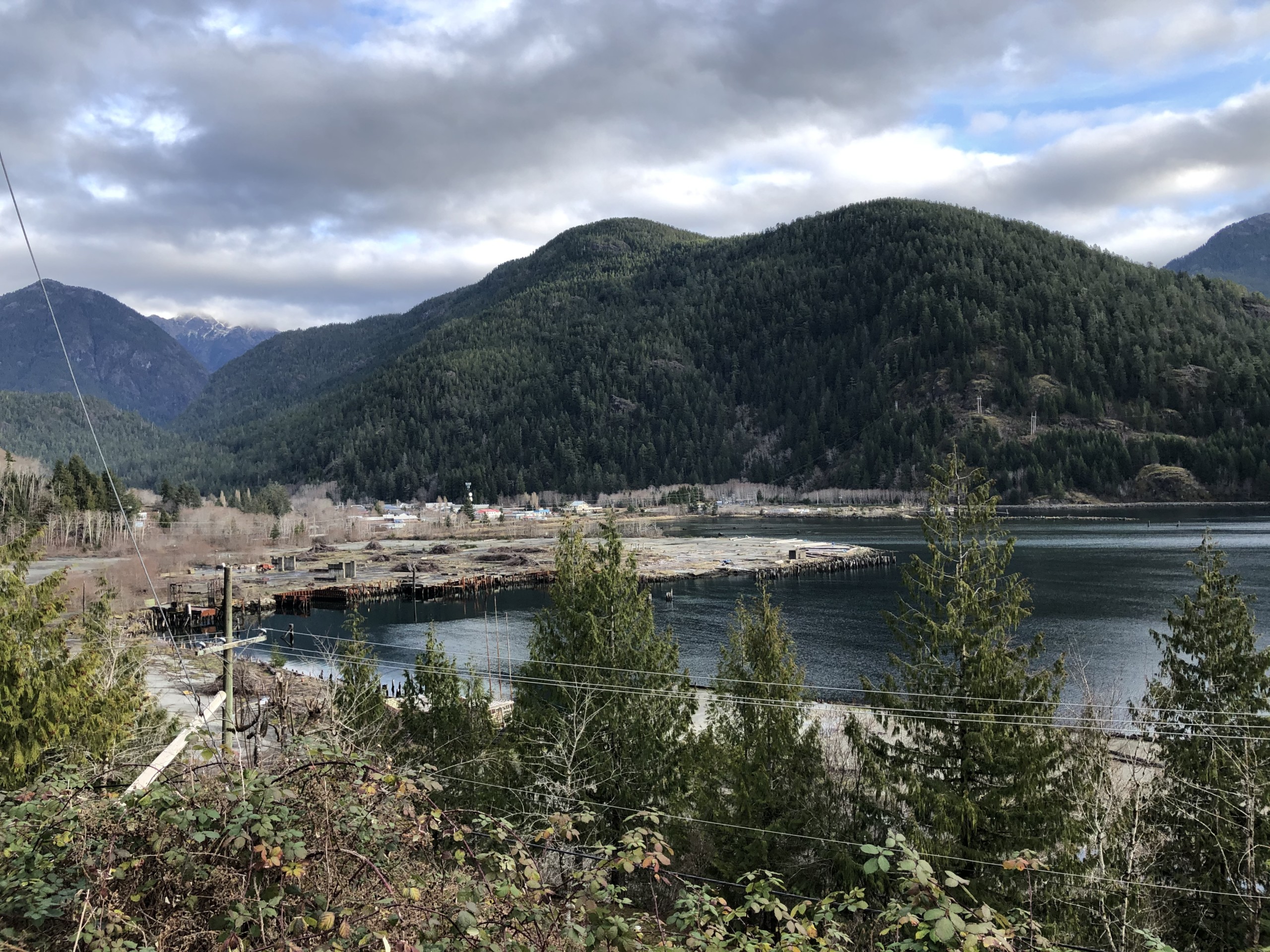
A former mill site in the flats at the mouth of the Tahsis River. Mayor Davis said the area is subject to flooding and he is concerned about legacy contamination from the mill. Photo: Larry Pynn
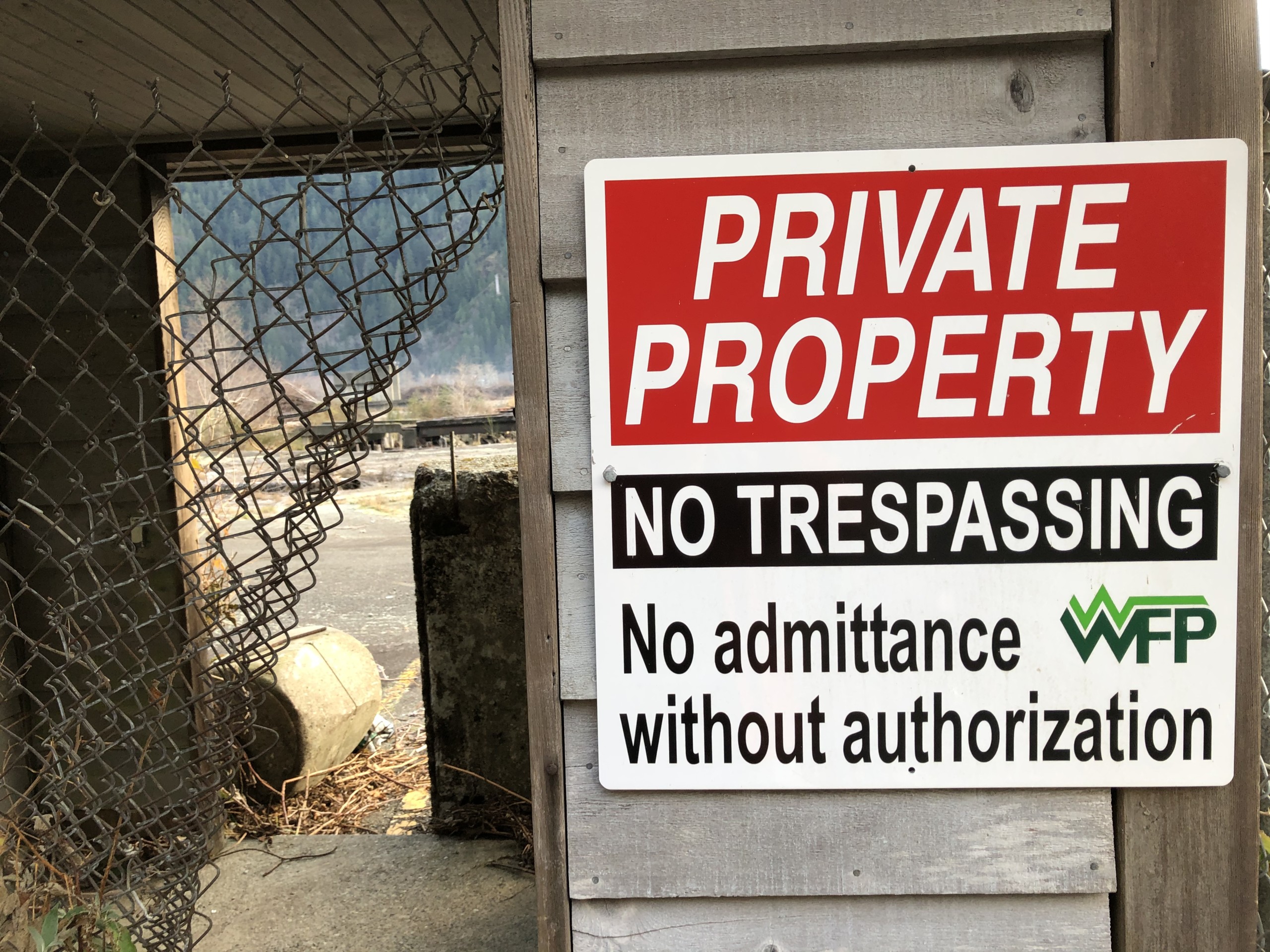
Locals skirt no-trespassing rules and sneak through this opening in a fence to walk along the site of a former Western Forest Products mill. Photo: Larry Pynn
Explanations for the demise of the local mill in 2001 range from globalization to falling Japanese demand to reduced timber supply. Two decades later, Davis says, “people don’t even remember the mill time and the big-money jobs.”
Today, Tahsis attracts people seeking cheap housing, including younger folks, seniors and those on disability incomes. Homes here sell for about $90,000 and up, making the village one of the most affordable communities in B.C.
Davis is eyeing the old mill site, currently owned by Western Forest Products, as a potential development property. But first he wants to know whether any legacy pollutants are leaching into the environment. He’s asked the provincial government to require Western to conduct the necessary tests. Former mill sites are known for contamination, including heavy metals and petroleum products.
Western owns two former mill sites in Tahsis, totalling 45 hectares. When contacted, company spokeswoman Babita Khunkhun declined to comment on any contaminants that may linger on the properties.
Diner owner Sally Taylor and her partner, councillor Bill Elder, have been around Tahsis long enough to remember the mill years. The couple left town for a few years after the mill closed, eventually returning to start new in the restaurant business and reclaim the slow pace of life.
“Nobody’s in a rush to go anywhere,” Elder says. “A traffic jam is two bicyclists.”
There’s so little crime in Tahsis that the RCMP has no permanent presence; rude Facebook posts are about as nasty as it gets.
And the weather forecast couldn’t be easier. “You wake up and it’s either rainy or sunny,” Elder says.
But Taylor points out the slow village life isn’t enough to support two restaurants, especially in winter. Her competition is the Ocean View, a community hub at the other end of town, offering a cafe, liquor store, gas station and small grocery store. There’s not enough disposal income in the town, she says.
“When the mill was running, everyone who lived here had a job.”
The Tahsis River drains a mountainous 78 square kilometres. About one-third of that is the major tributary, unlogged McKelvie Creek valley.
In 2019, Tahsis council passed a motion supporting the “complete preservation” of McKelvie, urging the province to remove the watershed from Western’s Tree Farm Licence (TFL) 19. Based on company statements from 2017, council feared logging could begin in 2020.
From the village you can see the towering ragged peaks of the McKelvie. “It’s a hanging valley, 100 metres above sea level,” Davis says. “It’s never been touched.”

An old cedar, flagged for logging in a cutblock near Tahsis. Photo: Troy Moth
Tahsis council argues that “less than 10 per cent of productive old-growth forests remain on Vancouver Island,” pointing to their importance for biological diversity, ecotourism, and good drinking water. The village gets its drinking water from a well but uses McKelvie Creek as a back-up source. McKelvie Creek helps feed the aquifer that fills the well.
The Village’s concerns may be paying off. Davis says recent discussions with Western suggest the company is prepared to look at the establishment of a network of Old Growth Management Areas and Wildlife Habitat Areas in the McKelvie Valley, which would also protect nesting habitat of the threatened marbled murrelet.
“That would effectively keep them out of there, which is great,” Davis says. “It’s not a provincial or national park, but it’s a pretty high level of protection.” The company is also discussing increased riparian protection along the Tahsis River. “They’re being pretty generous.”
Western remains coy about its plans as it undergoes a timber supply review. “Our harvest plan for the area is still under development in order to take feedback into consideration,” says Khunkhun.
Davis is also seeking to establish a community forest covering perhaps 2,000 hectares of provincial Crown land in the Tahsis valley. The designation would protect viewscapes for tourism and water quality, while permitting selective, small-scale logging to support a potential small local mill or local artisans.
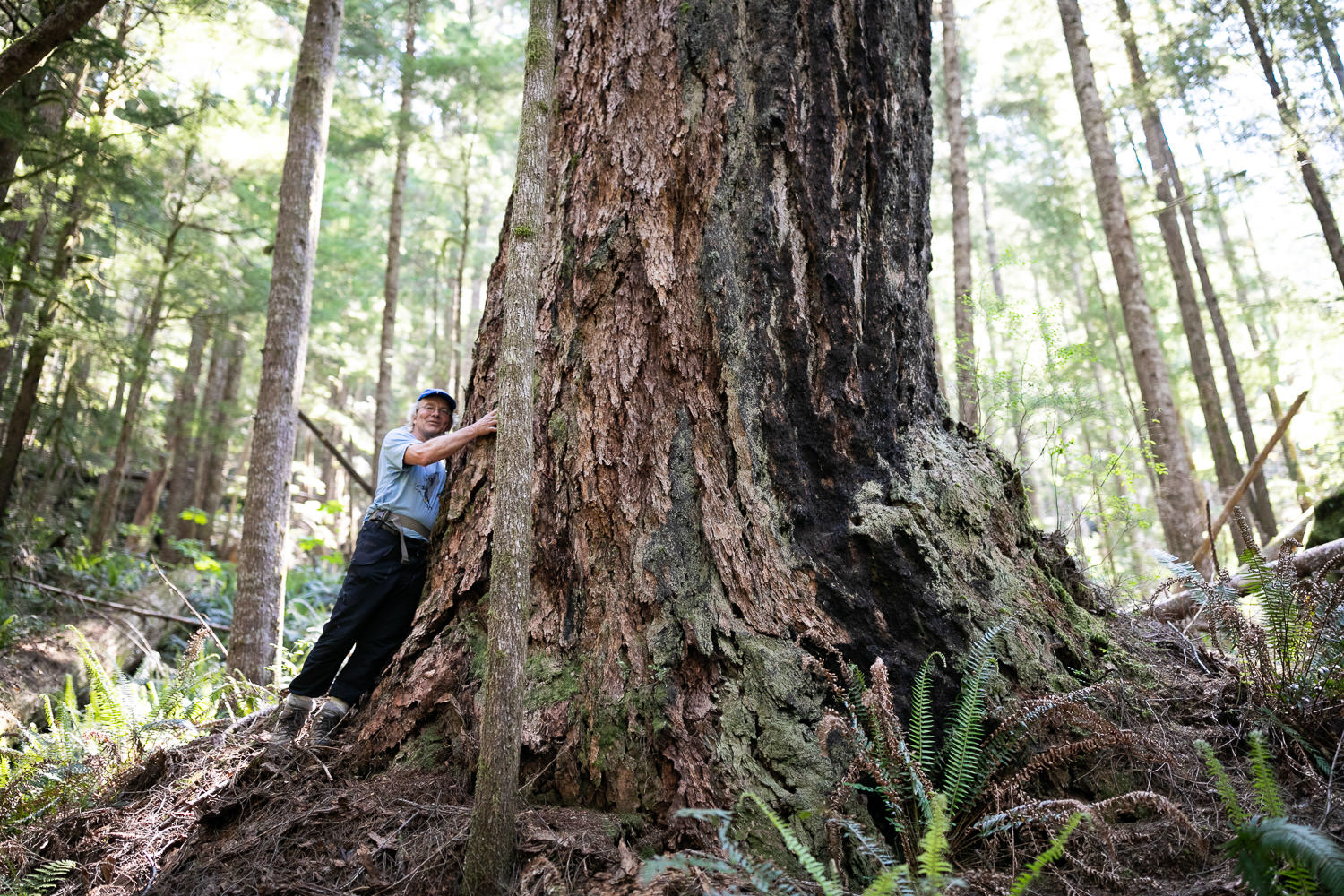
Mayor Davis touring the old growth in the McKelvie Creek watershed. Photo: TJ Watt
Tahsis falls within the traditional territory of the Mowachaht/Muchalaht. Like other First Nations around B.C., they are asserting greater control across their traditional territory following favourable court decisions and in a promised era of reconciliation. The Mowachaht/Muchalaht and Tahsis councils have met and discussed the village’s desire for a community forest licence.
Dorothy Hunt, lands and economic development manager for the Mowachaht/Muchalaht, released a short statement to The Narwhal, saying: “We are aware of the concerns that Tahsis has with logging in and around the township of Tahsis and more specifically McKelvie Creek.” Hunt added that the Mowachaht/Muchalaht presented solutions to B.C. and Western, but did not provide details.
“These types of initiatives and solutions can take many, many years to accomplish,” the statement says.
In the more immediate term, Davis says he has “kernels of a lot of good ideas that need to be fleshed out.”

The Tahsis Inlet. The surrounding region contains stands of unprotected old-growth forest, including ancient Douglas firs. Photo: Troy Moth
The community is well-suited for a shellfish processing plant or closed-containment salmon farm. There are scenic hiking trails, excellent kayaking opportunities and the “largest known concentration of caves in Canada.” B.C. recently declared a 511-hectare Wildlife Habitat Area for Thanksgiving Ridge, about 15 kilometres from the village, which features the deepest cave on Vancouver Island, old-growth habitat, bat colonies and small rare crustaceans.
The Canadian Coast Guard is giving the economy a small boost with construction of a search-and-rescue station in the village as part of the federal government’s $1.5-billion Oceans Protection Plan. The station will cover northwestern Vancouver Island and employ eight people across two shifts, utilizing a 14.7-metre Canadian Coast Guard lifeboat and rigid-hull inflatable.
There are also plans to reactivate old logging roads and create a two-day, round-trip all-terrain vehicle route between Tahsis and Zeballos — another one-horse town located one inlet to the north. Tahsis has already posted signs declaring its streets open to ATVs and requires operators, in part, to travel on the right-hand shoulder and not exceed 20 kilometres per hour. “It’s a whole chunk of tourism we don’t really have access to right now,” Davis explains.
On the edge of town, a couple in their 30s, Troy Moth and Celine Trojand, represents a new generation of residents who can work from anywhere with a reliable internet connection.
They are converting a 75-hectare former logging camp and its smattering of buildings into Art Tahsis, a retreat for learning and creativity in everything from the arts to technology. The idea is for guests to immerse themselves in their subject area and to gain inspiration from the landscape while enjoying local foods.
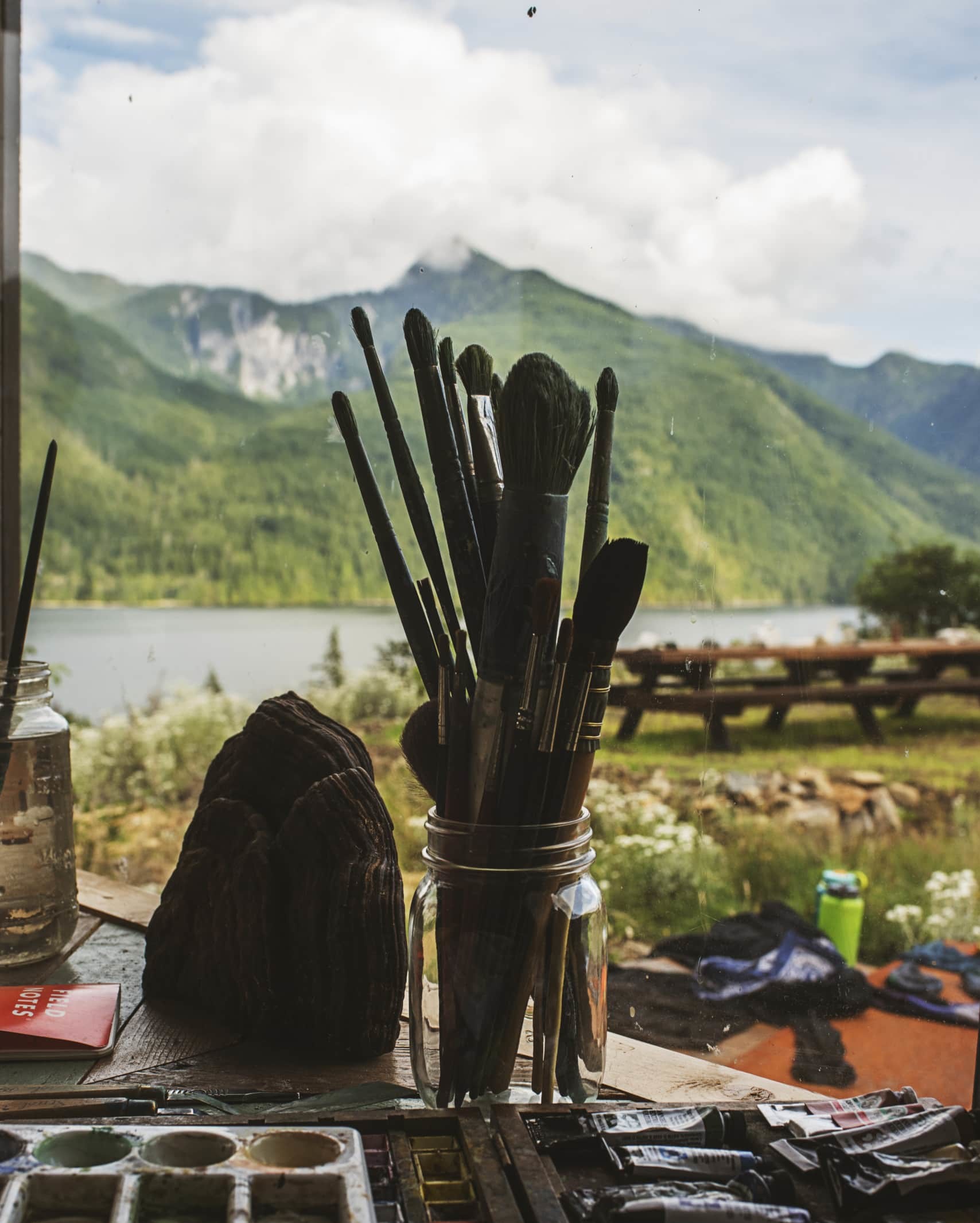
Artist supplies on the creative campus of Art Tahsis. Photo: Troy Moth
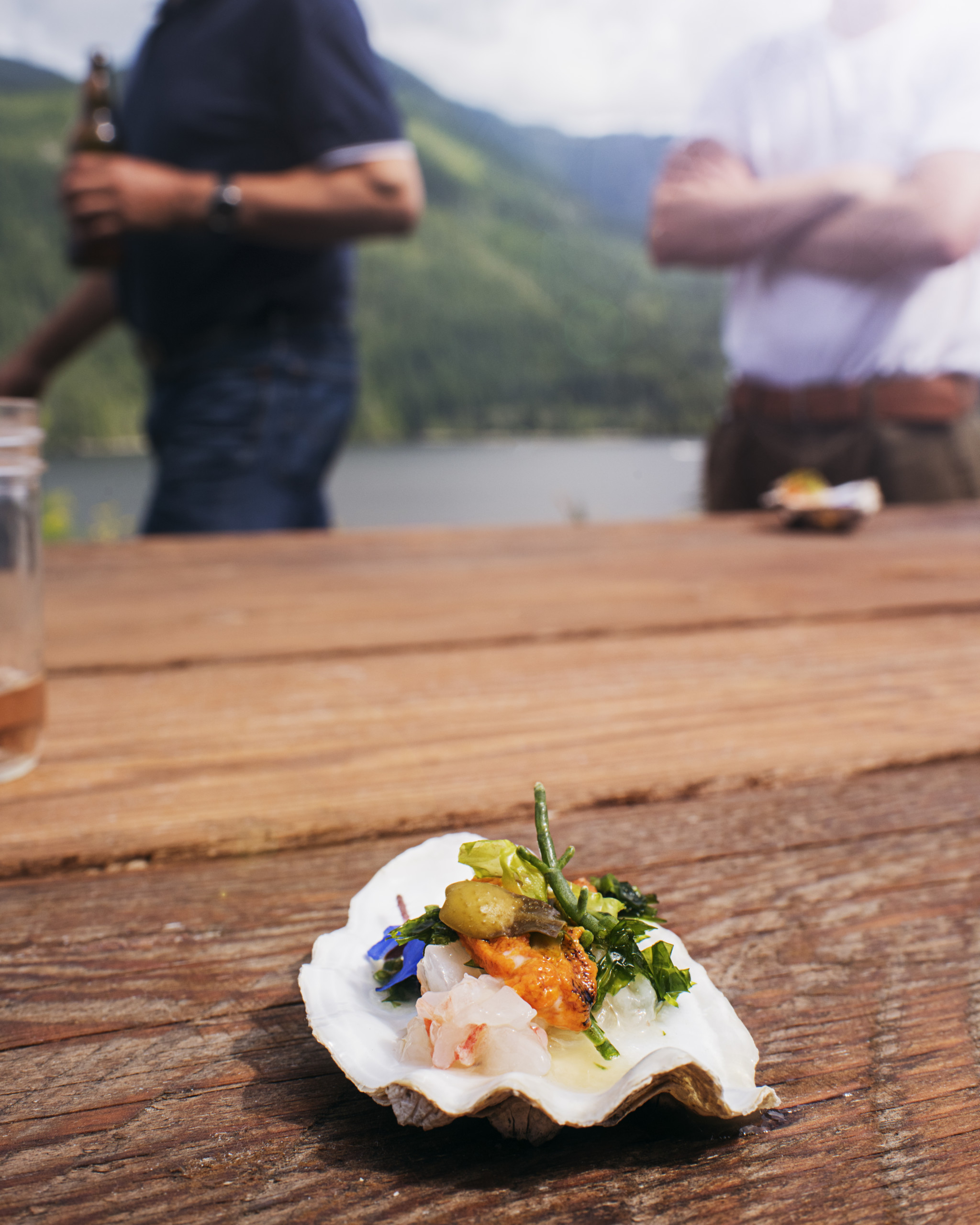
Art Tahsis places an emphasis on local foods. Photo: Troy Moth
Moth is an accomplished photographer — Vogue, Rolling Stone, GQ — who bought the property with two partners in 2016. “We found this property by chance and immediately fell in love with it,” he says.
Trojand, who settled in full-time about a year ago, has worked for various environmental groups, including Dogwood and Organizing for Change. She is captivated not only by the natural beauty of the area but also by its cultural and historical significance: British Captain James Cook made first contact with coastal Indigenous peoples not far from here at Friendly Cove in 1778.
“Tahsis is unique in B.C., a place where monumental things have happened,” Trojand says. “It’s impossible to live here and not feel that.”
Residents are generally united in their desire to see Tahsis back on its feet, but opinions vary on how to get there — or if the village can get there, at all.
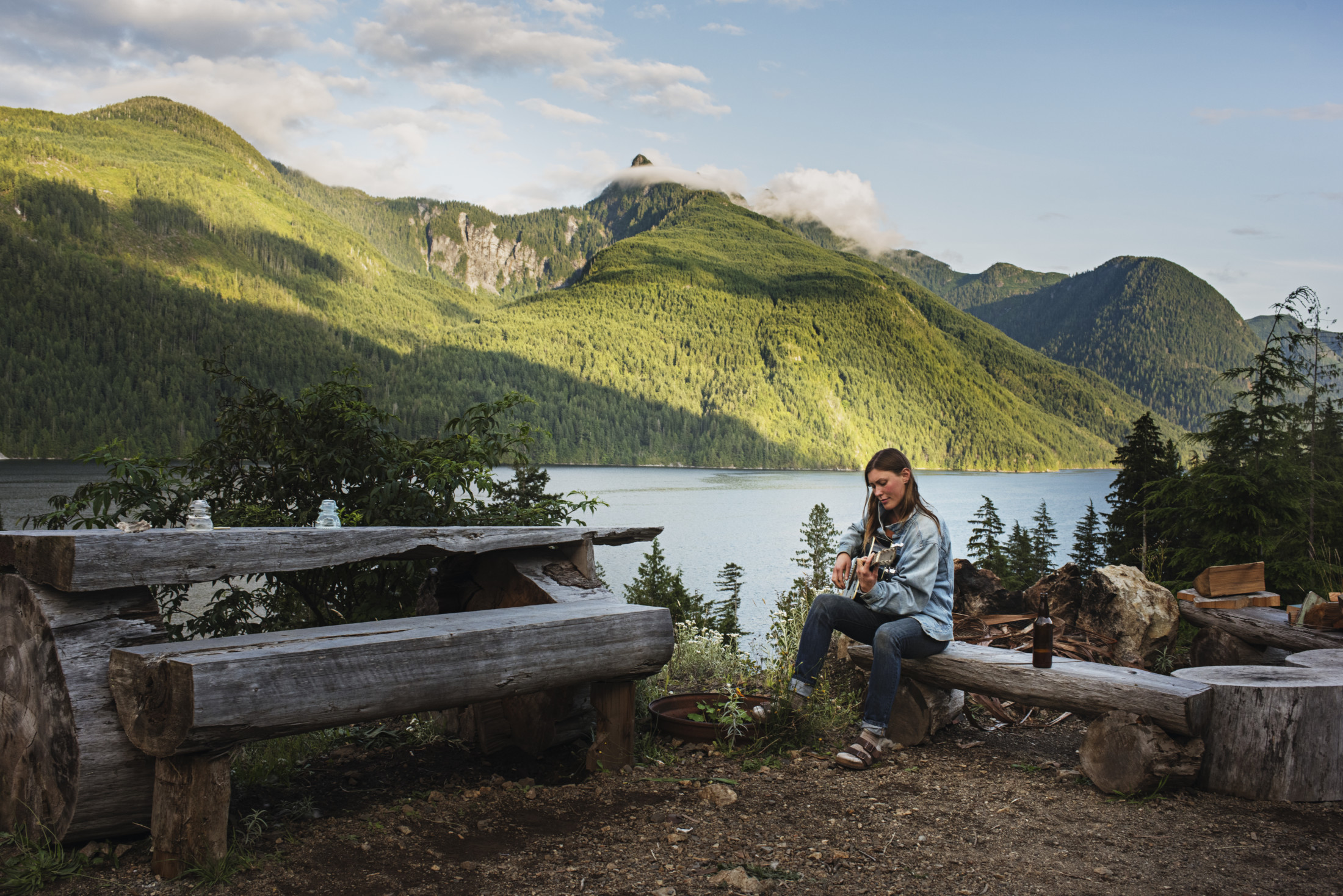
Carla Haywood, a young musician and tree planter who calls Tahsis home, on the campus of Art Tahsis. Photo: Troy Moth
During my visit, I find the few Tahsis residents who still make a living at logging trying to stay warm on the Western Forest Products picket line in Gold River.
I wade in with a sympathetic handshake and a bag of fresh butter tarts from Uptown Cappuccino just up the road. “You don’t have to be from Tahsis to be a brother,” jokes faller Rusty Turner.
I ask them about Davis’ vision for the community, and get a mixed reaction. The timber industry has always been the economic backbone of the community, they remind me.
“Logging has opened up all these towns and all these mountains,” says Tim Greer, born in 1971 and a life-long resident of Tahsis. “People want to go to the top of the mountains, the viewpoints, but how did you get there? You drove there.”
At the same time, the sport-fishing sector is precarious and tourist services in the village are almost non-existent. “There’s no bank machines, nothin’,” says Greer, who currently works in logging road construction and maintenance. “It’ll never change.”
Airbnb offers the most certainty for accommodation. The Westview Marina is only open during fishing season and the Maquinna Resort, at the far end of town, is physically collapsing upon itself.
Steve Choquette, who works heavy-duty equipment loading logs on Nootka Island, says there’s no significant source of employment to attract people and help rebuild the place.
“There’s really nothing there for the people,” he says. “You have to go to town (Campbell River) to do your major shopping. I’ve thought about these questions for 25 years. What do you do here?”
To witness one of the village’s logging concerns, Davis leads me to a scenic ridge above the east side of town. It’s the site of a potential new logging road for Western Forest Products.
“I should be making a caving suit for someone right now,” he says as we make our way up a steep incline along the so-called Maquinna Trail. “My life is a series of distractions.”
Tahsis has refused to allow the company to drive loaded logging trucks through the village, in part due to concerns about damage to local roads. The company is considering options.
“There’s a magnificent stand of old-growth Douglas firs up there and their road line goes right through the middle of it,” Davis says. “Part of the problem is the instability up there.”
Davis is a fit 62-year-old and it’s a difficult hike — think Grouse Grind, without the nice wooden steps. We pass through a mixed forest of Douglas fir, western hemlock and western red cedar. The understory is salal, sword and deer ferns and rocks carpeted with vibrant green mosses.
Storm-felled trees mine our route. I grab exposed roots to propel myself upward and eventually we reach a forest distinguished by big firs and pink ribbons reading “road location.”
The terrain certainly does seem steep for a logging road. Davis kicks a rock downhill and it continues rolling out of audible range.
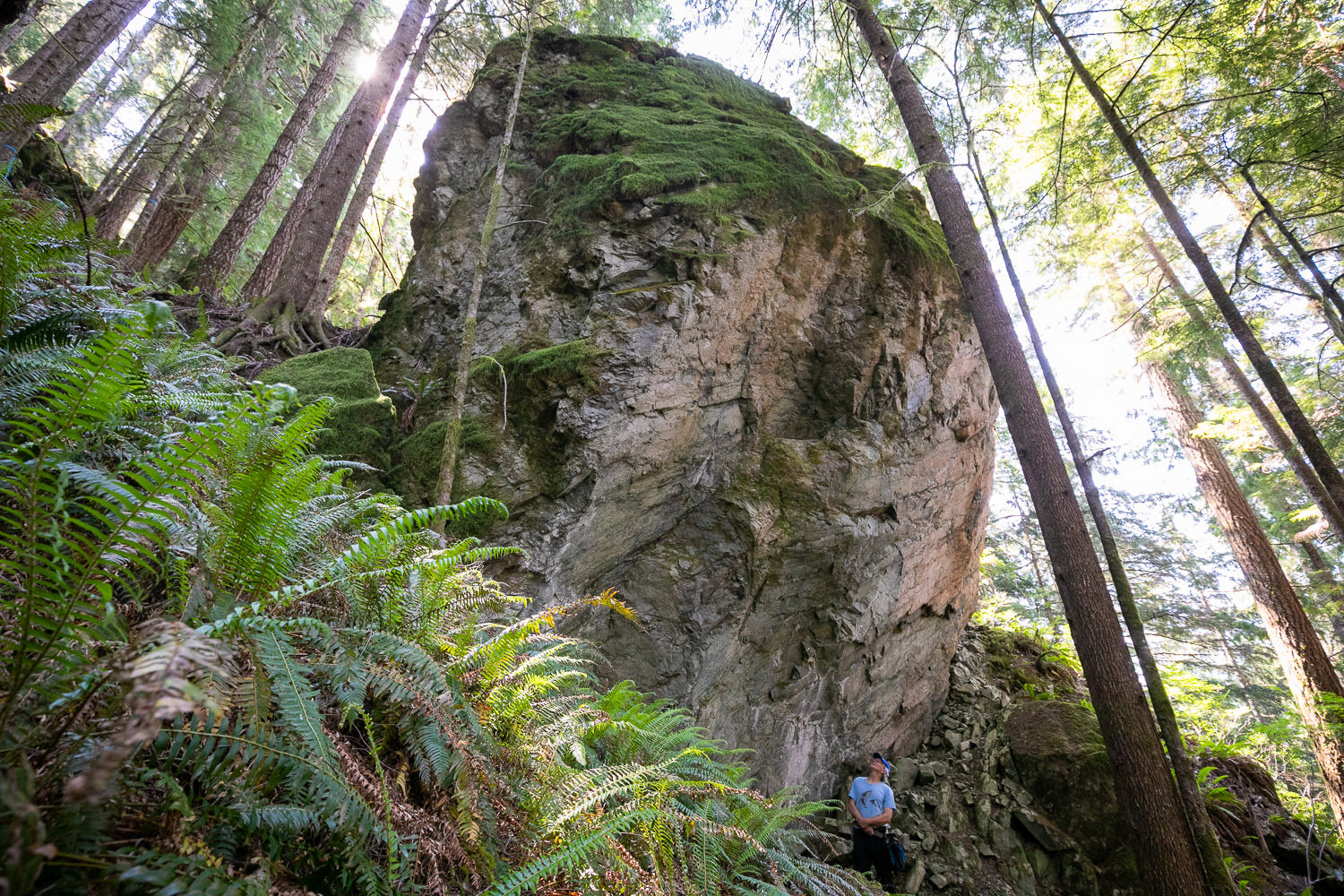
Davis poses beside a boulder on a steep hillside directly above Tahsis. Residents have voice concern about slope instability and rockslides should logging take place on steep hillsides such as this. Photo: TJ Watt
He is hopeful that in light of Western’s new conservation initiatives being discussed for the McKelvie Valley the company will abandon this option and even enhance protection for the trail through here.
“I’ve brought them some pretty nasty publicity in the past. I don’t think they want to go there again.”
We leave the trail and bushwhack along the planned road route then steeply downhill. I wince as I grab the barbed stalk of devil’s club, then repeatedly slip and fall — once skidding a metre on my belly down the bannister of a greasy fallen log. The thick brush around my legs makes it impossible to know where I’m placing my feet.
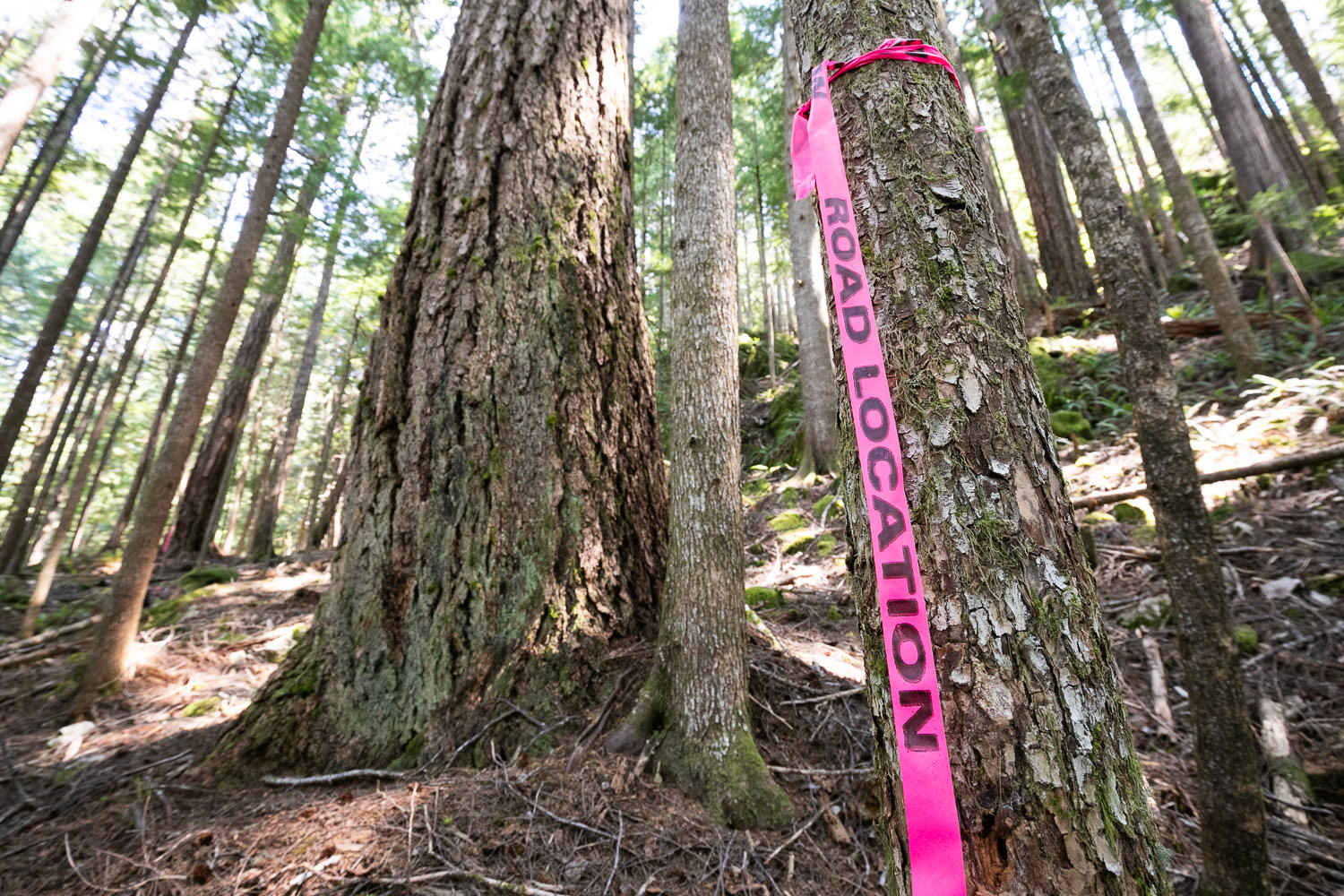
A tree flagged for removal to make way for a logging road. Photo: TJ Watt
The round trip takes four hours. Back in the village, I find an internet connection and book two physio appointments for my aching 64-year-old back. In that regard, I am leaving Tahsis in the same state as my brother more than half a century ago.
Family ties are only one reason that drew me here. I have always been intrigued with end-of-the-road towns. They can be filled with rich history, fascinating people and unexpected experiences. Tahsis is no exception.
Whether it remains a geographic and social oddity or manages to forge a new sustainable future built on ecotourism remains unclear — except to one person.
Davis is betting that Tahsis has a promising future. His own transition from eco-pariah to eco-mayor is proof enough that the end of the road can also be a place of new beginnings.
Update Monday, May 11, 2020 at 12:57 p.m. PST: This article was update to remove a reference to arbutus growing in near Tahsis. There is no arbutus growing in the region. A photo caption was also updated to indicate the image shows the Tahsis Inlet and not the McKelvie Creek watershed as previously stated and another photo caption was updated to remove a reference to a building being boarded up.
Get the inside scoop on The Narwhal’s environment and climate reporting by signing up for our free newsletter. A $335 million funding commitment to fund...
Continue reading
Canada’s first-ever Indigenous governor general doesn’t play favourites among our majestic natural wonders, but she...

In Alberta, a massive open-pit coal mine near Jasper National Park is hoping to expand...

A trade war could help remake B.C.’s food system, but will family farmers be left...
